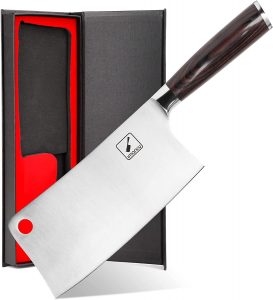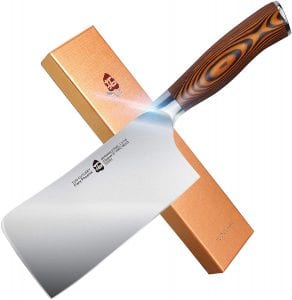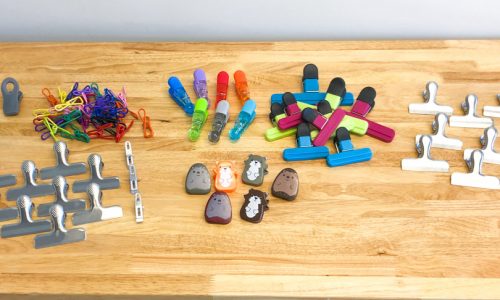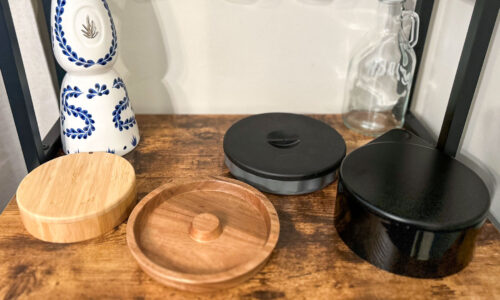The Best Meat Cleaver

Our Review Process
Don't Waste Your Money is focused on helping you make the best purchasing decision. Our team of experts spends hundreds of hours analyzing, testing, and researching products so you don't have to. Learn more.
Our Picks For The Top Meat Cleavers
- 1. XYJ Full Tang Handmade Meat Cleaver
- 2. Juvale Ergonomic Handle Professional Meat Cleaver
- 3. Utopia Kitchen Dishwasher Safe Meat Cleaver
- 4. Imarku Pakkawood Handle Meat Cleaver Knife
- 5. Farberware Stainless Steel Meat Cleaver Knife
- 6. Zelite Infinity Razor Sharp Cleaver Knife
- 7. TUO High Carbon Stainless Steel Meat Cleaver
- 8. DALSTRONG Hybrid Military Grade Chef’s Meat Cleaver
- 9. DALSTRONG Tapered Blade Meat Cleaver
- 10. Winco Anti-Rust Chinese Meat Cleaver
- 11. Orblue Ergonomic Easy Clean Meat Cleaver
Constructed from manganese steel, this butcher knife is extremely durable. It features an ergonomic, full tang handle that is not only comfortable, but also prevents hand fatigue. As an added bonus, this model comes with a leather knife sheath that can be attached to a belt.
Leather Sheath IncludedWith this meat cleaver comes an attractive leather knife sheath that will protect the blade when not in use.
Whether you're looking to make quick work of prepping vegetables or you need to chop through bone, this meat cleaver has you covered. It's constructed using a rust-resistant stainless steel and has a sharp blade. The handle is made from solid wood using an ergonomic design that makes it comfortable to hold.
Easy StorageThe built-in hole in the top corner of this meat cleaver makes it ideal for hanging.
This professional-quality meat cleaver is constructed from 100% stainless steel. That means you won't have to worry about corrosion, rust or stains. It's also highly durable, as well as recyclable, so you know you're money is well spent.
For Commercial KitchensAttractive features abound with this meat cleaver, including an ergonomic handle that reduces wrist fatigue and a hole for hanging.
Not only does this meat cleaver have a protective sheath, but the sheath also features a built-in mechanism that hones the blade each time you use it. Home chefs will love the ergonomically designed handle, which also has a comfortable grip. Of course, the superior quality blade makes quick work of cutting through even the thickest chunks of meat.
Superior Quality BladeAll you need is a little warm water and a gentle detergent to get this meat cleaver clean.
Buying Guide
Cutting meat requires a special tool, especially if you’re dealing with thicker meats. Sure, you could use your chef’s knife, but you’ll find you put in much more work while also risking damage to the meat itself.
They’re incredibly handy if you like to break down your own meats, rather than asking your butcher to do it for you, says our resident culinary expert Julie Chernoff.
“Meat cleavers get the most use in butcher shops, where they are constantly used to cut through large slabs of protein or to cut through bone,” she says. “You are looking for a large, broad, sturdy blade that can withstand considerable force. This must be a full-tang knife, and should weigh at least a pound at minimum; the one I have at home weighs nearly 2 pounds and it means business.”
There are a few features to consider when you’re in the market for a meat cleaver. The first is the blade itself. Top meat cleavers prioritize something called edge retention, which means the blade is not only sharp, but you also won’t find yourself sharpening it every time you use it. This lets you enjoy consistency every time you start meal prep.
Retaining that sharpness does require a little extra work, though. You won’t be able to just toss your knife in the dishwasher after dinner. Instead, you’ll probably need to hand wash it to ensure it retains its effectiveness.
It’s important to note that meat cleavers do have their limitations. If you have heavier, thicker cuts of meat, especially with bones, you’ll need a cleaver that’s designed to tackle those big jobs. You’ll also need a special type of cleaver if you’re trying to slice and dice frozen items.
The handle directly drives how your knife performs. Look for a cleaver with a sturdy, ergonomic handle design that will maximize your comfort during those longer meal-prepping sessions. Some handles also offer features like slip-resistance, while others may advertise that they’re designed to keep bacteria at a minimum. Those can be nice “extras” to have in a knife.
“A non-slip grip surface is a serious plus, because the last thing you want is for this instrument to go flying out of your hand; breaking down meat is a messy job,” says Chernoff.
The accessories can make a big difference, as well. A sheath will come in handy for safely storing your cleaver when you aren’t using it. Since it can be tough to find a sheath that fits your blade perfectly, having one included with your purchase is a nice bonus. If you’re giving a meat cleaver as a gift, some come with gift packaging to save you time.
Our Expert Consultant

Culinary Expert
Julie Chernoff is a long-time member of Les Dames d’Escoffier (past president of the Chicago Chapter, and current co-chair of the LDEI Legacy Awards Committee), the Association of Food Journalists (AFJ) and the International Association of Culinary Professionals.
Chernoff is the dining editor of Better, a lifestyle website and print magazine. Her journalism started in the test kitchens of Weight Watchers Magazine. She holds a BA in English from Yale University and is a graduate of the California Culinary Academy. She has spent the last few decades styling, photographing, teaching, developing recipes, editing, thinking and writing about food.
What to Look For
- As with many knives, a cleaver’s handle can enhance both safety and comfort. Often this is all in the way the knife curves. Many of today’s cleavers are built with ergonomic handles to ensure you remain comfortable even when cutting for long periods of time.
- Grip is especially important. A nonslip handle will help prevent accidents.
- The weight of the knife also determines how comfortable it is to hold. A lightweight build will help reduce fatigue when you have a big job to do.
- Cleavers can handle boneless cuts of meats, as well as vegetables. However, if you’re trying to tackle frozen items, meat with bones or other hard materials, you could find the handle breaks. If you need something to handle those heavy-duty tasks, look for a cleaver that’s built for it.
- Pakkawood is a popular material for knife handles. Pakkawood is a blend of wood and plastic that is both waterproof and durable. Where wood would typically splinter or warp in food preparation conditions, pakkawood holds its own while still looking like genuine wood.
- You may see the words “full tang.” This simply means that the back portion of the blade extends all the way through the handle. Full tang knives generally are more durable and offer more control.
- Some cleavers advertise that they’re dishwasher safe, but it’s best to hand wash knives of any type. Not only does the dishwasher take a toll on the blade, but pakkawood can also suffer when exposed to the extreme heat a dishwasher puts out. When hand washing your knives, mild soaps are safest.
- As visually appealing as etchings in blades are, keep in mind that at a glance, these designs can come across as smudges or dirt. You may miss the impression you’re trying to make by choosing one of these knives.
- Storage instructions for cleavers and other knives typically focus on the blade. However, it’s also important to factor in how your handle will hold up while in storage, particularly if you’ve chosen one made of wood. Dents and scratches can take away from the look of your knife.
- One bonus you’ll find in some knives is that the handles have antibacterial properties. This will help keep germs at bay while you’re preparing your meals.
- Most of your cleaver shopping will home in on the blade. Many cleavers will promise to have the sharpest, most powerful blades, so look into the materials used to build the blade. Cleavers that were cooled with nitrogen and made from high-carbon steel or multiple layers of stainless steel are good options.
- In addition to initial sharpness, look for a blade that retains its edge after many uses. If you have to keep sharpening your cleaver, you’ll find it becomes far less convenient.
- Although consumers turn to cleavers for cutting meat, you’ll get far more use out of it if you choose one that’s fairly versatile. Some cleavers go beyond proteins to help you chop fruits and vegetables.
More to Explore
Meat cleavers earned an early reputation as a medieval sort of tool designed to blast through any cut of meat. In the early days, butchers would use it to slice right through bone-filled meats effortlessly. But today’s butchers don’t use meat cleavers for the most intense work. In fact, they prefer either handsaws or bandsaws for slicing through dense objects like bones and ribs. For home use, though, cleavers can be the best way to quickly cut boneless meats. Although a chef’s knife will do for most meal prep, using it on whole chickens or large vegetables can wear out the blade, making a cleaver a great way to preserve your knife collection.





















